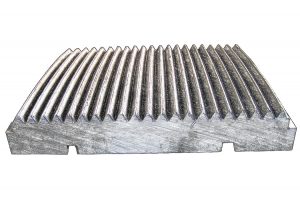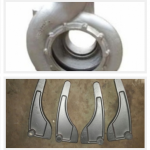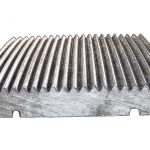A Few Important Things to Know about Manganese Steel
Manganese steel, also known as Hadfield steel is widely used for rugged services. The steel provides wear-resistance as well as self-renewing surfaces over a hard unbreakable core. The steel alloy contains 12 to 14% manganese. It is mostly known for high impact strength. It is also known for abrasion resistance in its hardest form. Manganese steel is considered as ultimate work-hardening steel. There are a number of benefits of using this steel. Besides, there are so many things to know about this steel as told by a leading manganese steel casting manufacturer. And some of them are as follows.
- Uses of manganese steel – The steel is self-hardening. And owing to this unique property, it is often used in the mining industry. It is used for manufacturing rock crushers, cement mixtures, crawler treads, shovel buckets, and elevators. It is used in the rail industry as well. In fact, manganese steel is used for almost every high-impact environment. You can also see the steel to be used in window bars, especially in the prisons. Anti-drill plates and bullet-proof cabinets are also made from manganese steel.
- It hardly rusts – Though most low-alloy steels rust in damp and moist environments, it is not evident with manganese steel. Steel containing an increased amount of manganese ensures a positive and protective effect on corrosion resistance. This is mostly because of the manganese ion absorption.

- It is non-magnetic – Manganese steel features wear and work hardening capacities but it is non-magnetic. And thus it is perfect to be used for electrical transformer assemblies as well as industrial lifting magnet.
- It is not easy to cut – Manganese steel or mangalloy is hard to process in machining. Thus, it is often known for having ‘zero machinability’. You can’t soften the metal by annealing as told by a topnotch manganese steel casting manufacturer. It rather hardens fast under grinding and cutting tools. Thus it requires special tooling to machine the steel. You may face hard times to drill the steel with carbide or diamond. It can be forged from yellow heat. But it can crumble while hammered in its white-hot phase. The steel is tougher when heated in comparison to carbon steel. You can cut it with an oxy-acetylene torch, though laser or plasma cutting will be a more preferred option.
- Manganese steel welding – The plate made of manganese steel is weldable. You need to keep the heat low and cool the weld as fast as feasible to keep away from cracking. It would be good to weld it under an interpass temperature of less than 500F. Owing to the toxic nature of weld fumes, it is extremely vital to keep yourself protected accordingly. High manganese steel plays a significant role in today’s industrial applications. Manufacturing of 11 to 14% of steel is predominant.
Manganese steel is mostly used in marine as well as the rail industry owing to its toughness and corrosion resistance properties. It is hard to cut. It is non-magnetic by nature. It hardly rusts as well.




